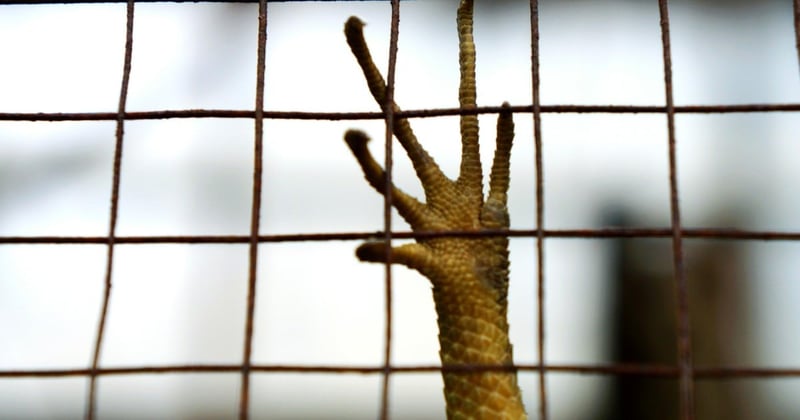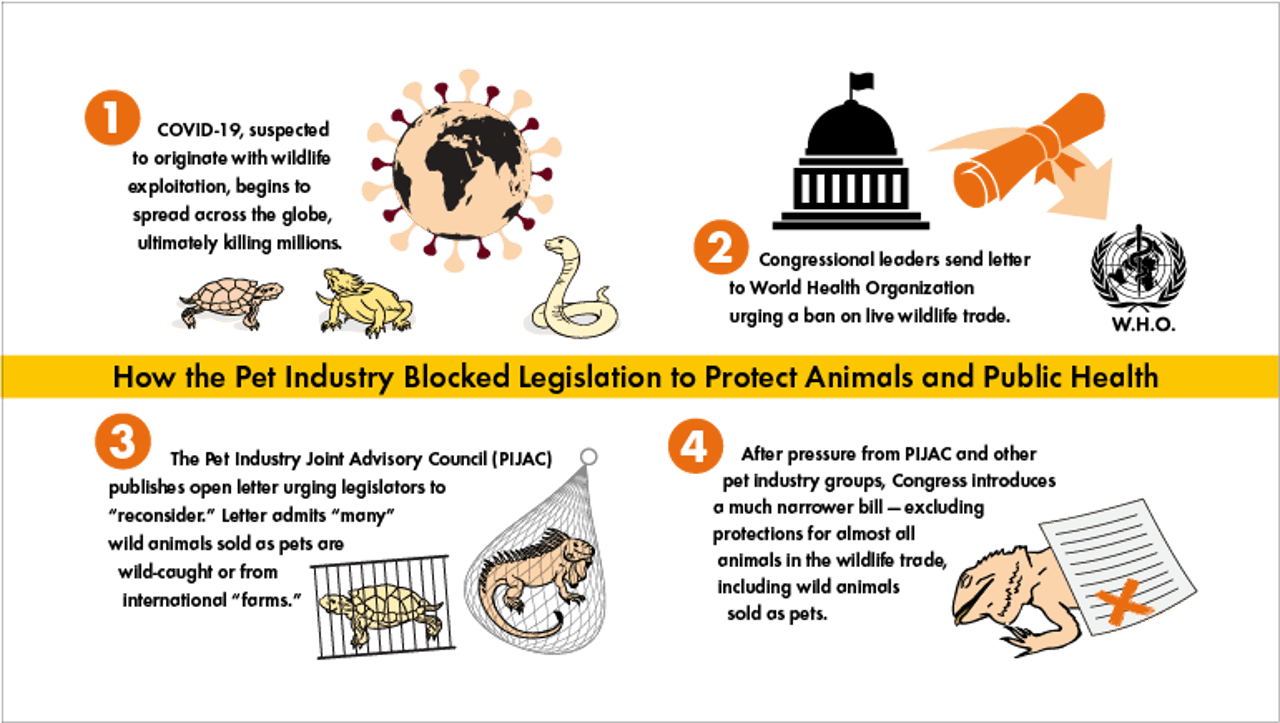
New Interactive Website Exposes Animal Suffering in the Wildlife Trade Driven by the Pet Industry
Blog
Whether they’re bred in cruel mills or captured from their homes in the wild, animals sold in pet stores are suffering while pet retail giants profit.
Dozens of wild animal species are sold in pet stores like PetSmart and Petco. If you’ve ever walked into a big box pet store, you can’t miss the rows of bearded dragons, tokay geckos, and parakeets being sold right next to industrial bags of cat litter and dog food. Beyond the birds and reptiles are even more animals—small mammals like guinea pigs, hamsters, and mice.
World Animal Protection just launched a new interactive website exposing how the pet industry and big box pet stores are driving the wildlife trade and profiting off the exploitation of animals. Check it out to learn:
How the Pet Industry Is Fueling the Deadly Wildlife Trade
The wildlife trade is a global multi-billion-dollar industry that exploits animals for use as food, entertainment, traditional medicine, and pets. The US is a major reason that the destructive wildlife trade is thriving, with major studies concluding that the US is the biggest importer of wildlife in the world. Demand for wild animals to be used as pets is one of the primary drivers.
The number one source for birds, reptiles, and fish in the US is pet superstores or pet shops. And the industry is desperate to protect its profits. As our new interactive website explains, the pet industry is actively lobbying to stop laws that would curtail the wildlife trade and protect animals. While the challenge is significant, if we can end the retail sale of wild animals, we can stop the suffering of hundreds of thousands of these sentient, feeling beings.
How Animals Suffer in Cruel Mills
Whether wild or domesticated, virtually all animals sold in pet stores are either intensively bred in mills—commercial breeding facilities that care more about profits than animal well-being—or are captured from the wild. Mills produce as many animals as possible, as cheaply as they can. But whether they’re shipped from distant countries or bred domestically, the result is the same: animal suffering. For wild animals, the suffering doesn’t stop when they leave the pet store. Wild animals can only fully thrive in the wild, where all their physical and psychological needs can be met. This can never happen in a captive environment.
Bea’s Story
Finally, read about Bea, a bearded dragon. You’ll learn what it’s like to be born in a reptile mill, shipped to a pet store, and then sold to a human home where she’ll experience only a fraction of the space and freedom she’d experience in the wild. Though Bea is fictional, her heartbreaking story is shared by hundreds of thousands of animals.
Check out the website and then send it to your family and friends.
